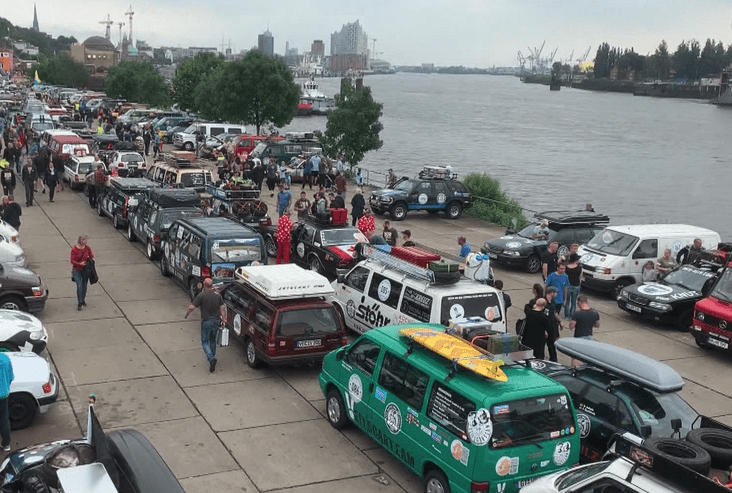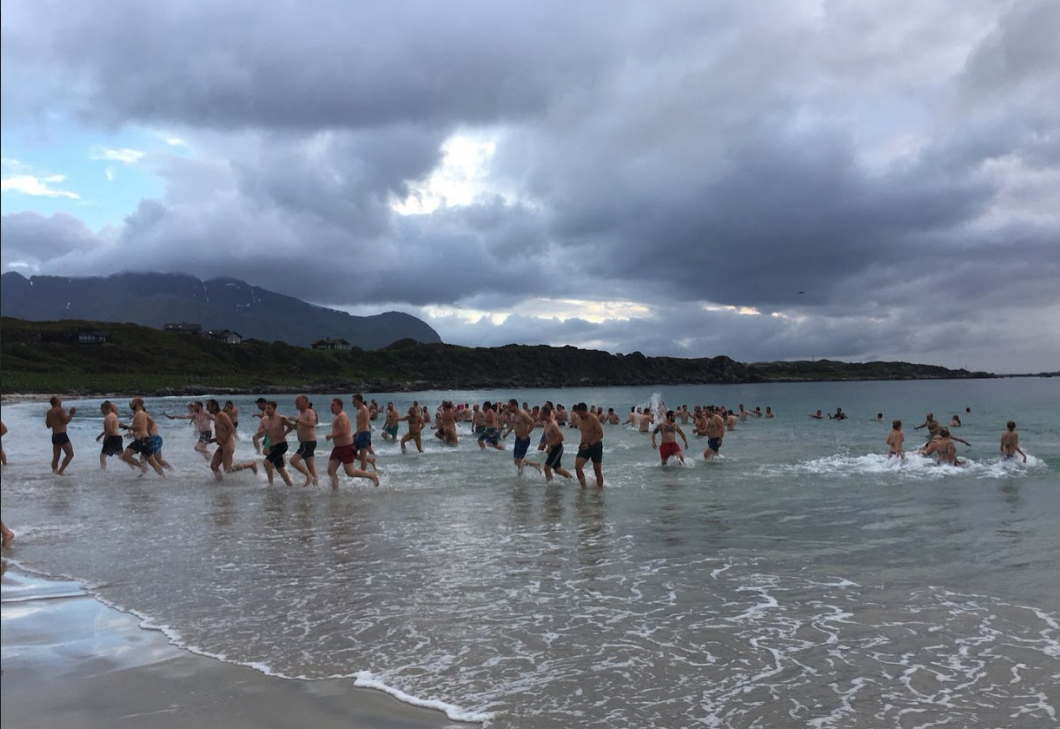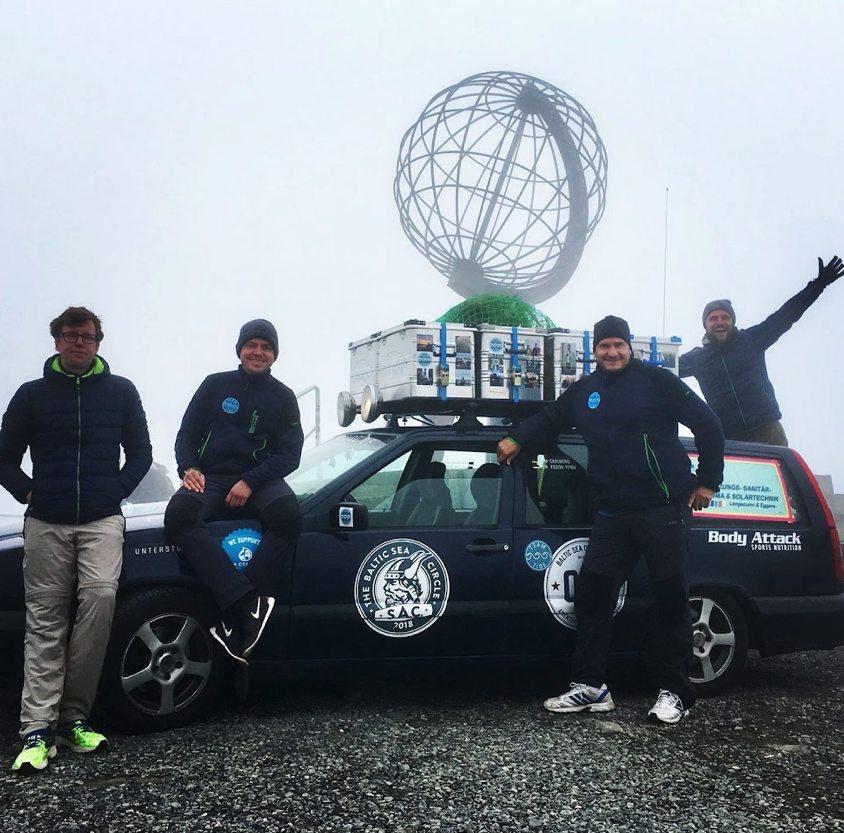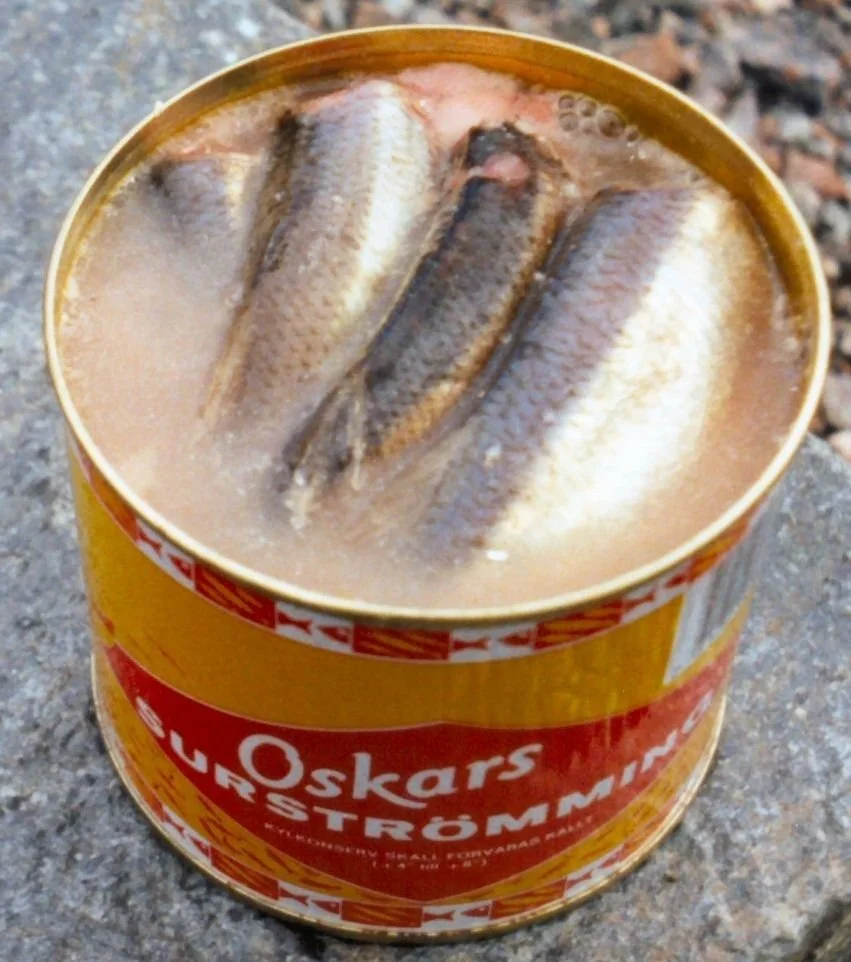The Rally at the Top of the World
HAMBURG, GERMANY — MAY 30 — As the sun rises over this old German port, hundreds of eager vagabonds, 150 rattletrap cars, and a boundless spirit of fun and lunacy are stacked up at the starting line.
All the previous night, here on the shoulder of the earth where the sun stays up late, drivers have chomped at the bit that adventure puts on the young and the “forever young.” Finally the start is at hand. And with a gunshot and a great cheer, another Baltic Sea Circle Rally is off!
Across the starting line roll 1990’s Mercedes with 150,000 miles, 1980’s VWs with 250,000 miles, dozens of rusted but still running vans, trucks, motorcycles, and a few old ambulances and fire engines. All are headed “into the wild with your old or new school dream car.” (Recent rallies have also included new EVs in constant search of chargers.)
Over the next two weeks, the clunkers that do not break down and the EVs that can find enough juice will wind north along the coast of Norway, climbing above the Arctic Circle and beyond. After reaching the northernmost tip of Europe, all will then return, south through the endless forests of Finland, into Estonia, Latvia, Lithuania, then on through a corner of Russia and Poland and finally. . . back to Hamburg.
Numbers only hint at the fun ahead. Nine countries. Sixteen days. 4,600 miles. Three ferries crossing seas and gulfs. A spate of border crossings, hundreds of encounters with natives speaking native languages. And since it’s all for charity, another 100K euros raised for worthy causes.
Since its beginning in 2011, the annual Baltic Sea Circle rally has called to the footloose and fun loving. “We were tired of boring beach vacations where you just sit around all day,” explained a young German from the team Pirates of the North Cape. The Guardians of the Baltic Sea understood. “Anyone who knows us knows we’re up for some fun.”
This kind of fun, however, is not for everyone.
“The worst experience ever in my life to join this event,” someone wrote on Facebook. Bad camping, horrible roads, and music in campgrounds till dawn added up to “the worst experience everrrrrr. . .”
Well, back to boring beaches. But for most, the rally spirit is summed up by the team Freiheit (Freedom). Two Germans in a 1997 Audi with 240K, Freiheit’s motto is immer dabei — “always there.”
Most teams come from Germany but as word spread, rallies have drawn adventurers from throughout Europe. The open and rugged road plus vast fjords and forests are reasons enough for going. And as if challenges were lacking, the host Superlative Adventure Club throws more obstacles in the way.
Rules clearly state — no GPS or Internet. No travel on autobahns or freeways — strictly back roads which in northern climes mean gravel, mud, swarms of mosquitoes and probably snow. And then there are six “challenges” only revealed in the official Roadbook handed out just before the start.
Challenges might include taking a midnight dip in the Arctic Ocean or snapping selfies of your team at Norway’s North Cape high atop the continent. Each year also has special challenges.
In 2018, Hamburg native Tim Carlberg was prepared for the best and the worst. Carlberg, a middle aged TV producer who has traveled and hiked most of the world, joined the rally after hearing about it at a birthday party “with perhaps too much alcohol involved.”
He and his four-man Team Tide drove a 23-year-old Volvo with 235,000 miles. They took the required selfies in the far North (above — Tim third from left) and even managed to find the 1974 Abba Tour Bus — somewhere. But nothing prepared them for the biggest challenge — surströmming.
Surströmming is a Swedish “delicacy.” Fermented herring, lightly salted, aged six months in a can that opens with a “poof!” it is utterly disgusting. Carlberg’s team was not required to eat any surströmming, just drive an entire day with an open can in the car. Still, they were curious. It couldn’t taste as bad as it smelled.
“So I tried it,” Carlberg remembered. “It immediately flew out in a wide arc.”
Unlike most adventure rallies, the Baltic Sea Circle has no fixed route. Drivers can go anywhere so long as they reach certain checkpoints. These include two full-blown parties — a barbecue along a Norwegian fjord and a tipi party, with sauna and hot tubs, in the forests of Estonia.
Mostly, however, Carlberg remembers driving. And driving and driving. With four large men crammed in a station wagon, Team Tide rattled along for 300+ miles a day, day after day. They dodged “aggressive mosquitoes” in Russia, bought new tires in Murmansk, and lost their catalytic converter at a railroad crossing in Kaliningrad. But he will never forget, north of the Arctic Circle, the light, the light. . .
“When we crossed the Arctic Circle and realized that it wouldn't be dark for the next few days, we experienced a magical moment. Because the body can no longer orient itself to day and night, it can happen that you're still on the road at 1 a.m. and suddenly feel like having breakfast, and at 8 a.m. you want a beer before going to bed.”
This year’s Baltic Sea Circle Rally set out on May 30. On June 14, vehicles and drivers, all “changed by the trip,” will start staggering back into Hamburg. As befitting such anarchy, there are no rewards for speed.
“Creativity and a talent for improvisation are the key,” organizers stress. A few top finishers will be automatically enrolled in other Adventure Club rallies, including the more rigorous Winter Baltic Sea Circle. The rest will return to their boring lives, savoring memories of near breakdowns, ice-blue northern skies, and midnight suns.
As the Baltic Sea Dogs advised — about the rally and perhaps about life itself — “break it before it breaks you.”











